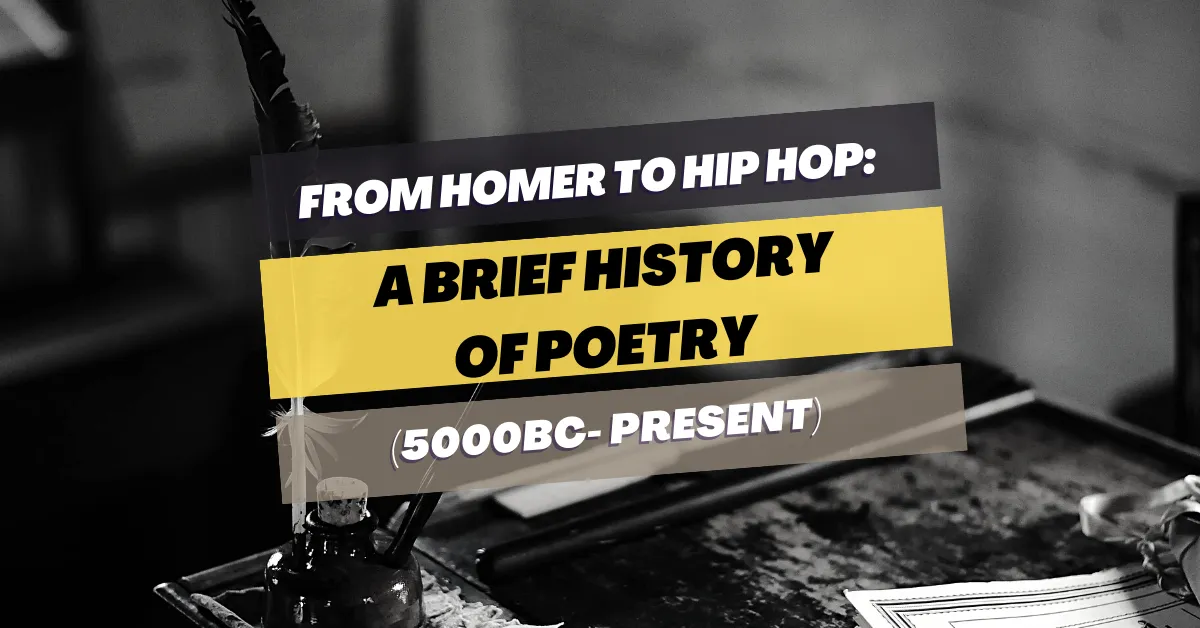The History Of Poetry (5000BC- 2024) - A Timeline
Poetry is a timeless form of expression, with a history that spans cultures, civilizations, and millennia.
From Homer’s epic tales to the rhythmic beats of Hip Hop, poetry has been a consistent and vital thread in the tapestry of human history.
In this article, we’ll take a journey through time to explore the different eras of poetry, tracing its origins from ancient classics to the modern masterpieces of today.
Table of Contents
When did people start creating poetry
Poetry, the art of rhythmical composition, has been a part of human culture for thousands of years. While it’s challenging to pinpoint an exact date for its inception, evidence suggests that poetry has existed since ancient times, likely originating from oral traditions.
Early civilizations, such as the Sumerians, Egyptians, and ancient Greeks, used poetry as a means of storytelling, worship, and entertainment. These poems were often recited or sung, passed down through generations, and evolved over time.
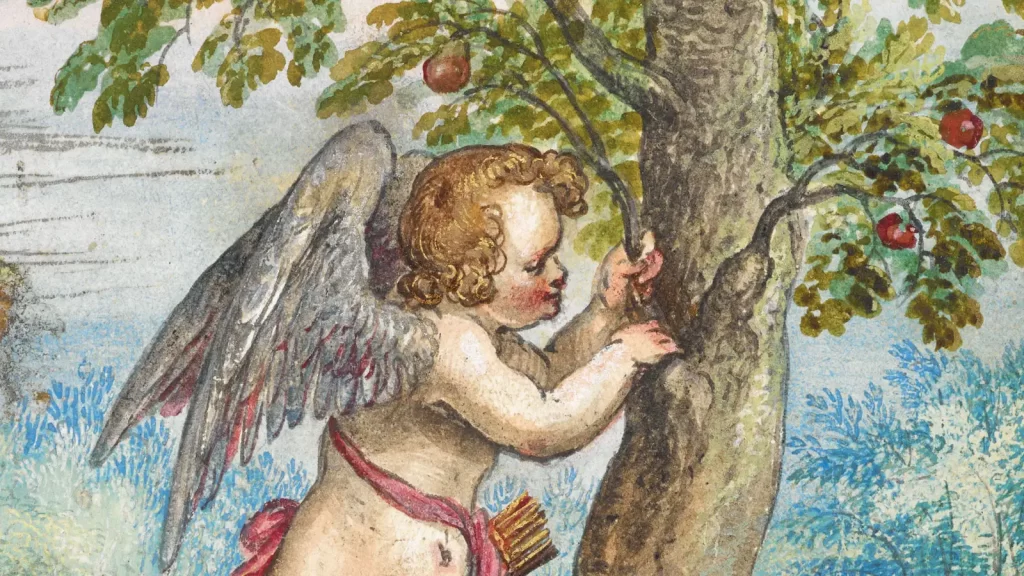
Ancient Poetry: 5000 BC
Poetry’s evolution stretches back over 5000 years to Mesopotamia, where the earliest known poems were inscribed on clay tablets in cuneiform. These ancient poems were often used and developed for the governance and rule of kings over their people.
Poetry likely emerged from ancient rituals and chants, initially serving as a means of storytelling during religious ceremonies, weddings, and funerals.
Renowned poets like Homer and Virgil were revered in ancient times. Their poems were recited publicly, providing entertainment for those who could afford it.
Even today, poetry remains a vital part of cultural ceremonies, including weddings, funerals, and presidential inaugurations, where professional performers often recite hymns and poems.
The Epic of Gilgamesh, dating back to 2100-1200 BC, is the oldest known poem, originating from Mesopotamia. Gilgamesh is believed to have transcribed these poems from even older works that have since been lost to time.
Throughout history, poetry has been a subject of deep analysis by philosophers, theologians, and authors, regarded as the pinnacle of literature for its ability to effectively convey ideas using all eight parts of speech.evolution
What are some reasons why ancient people created poems
Ancient civilizations created poems for various reasons, reflecting the cultural, social, and religious beliefs of their time. One primary motivation was to preserve their history and traditions.
Before the widespread use of writing, oral traditions were the main method of passing down stories, myths, and cultural practices. Poems were an effective way to encode and remember these narratives, making them easier to pass on to future generations.
Another reason for creating poems was to honor their gods and goddesses. Many ancient cultures believed in a pantheon of deities, each with their own myths and legends.
Poems were often used in religious rituals and ceremonies as a way to praise and communicate with the divine.
Poetry also served as a form of entertainment and education. In ancient Greece, for example, poets like Homer and Hesiod composed epic poems that were performed at festivals and gatherings.
These poems entertained audiences while also teaching them about history, morality, and the human condition.
Introduction To Ancient Greek And Roman Poetry
Ancient Greek and Roman poetry have left an indelible mark on Western literature, shaping its very foundation. These ancient civilizations gifted us with timeless works that continue to resonate across generations, offering a glimpse into the depths of human experience.
The epic poems of Homer, such as the “Iliad,” stand as towering achievements of ancient Greek literature. These epic tales, narrated in dactylic hexameter, were not just stories but communal performances that captivated audiences and served as a cornerstone of entertainment in ancient Greece.
The enduring legacy of the “Iliad” is a testament to its profound influence on Western culture.
Sappho, a remarkable female poet of ancient Greece, brought a unique voice to poetry with her heartfelt and passionate verses on love and desire.
Despite the challenges of time, her works in the Aeolic dialect have survived, solidifying her status as one of the greatest poets of all time.
Transitioning to ancient Rome, we encounter poets like Virgil, Ovid, and Catullus, who drew inspiration from their Greek predecessors.
Virgil’s “Aeneid,” a monumental epic on the founding of Rome, mirrored Homer’s style and narrative prowess, earning it a place among the greatest Roman literary works.
Ovid’s “Metamorphoses” stands as a testament to the power of storytelling, weaving together myths and legends in dactylic hexameter.
This influential work, exploring themes of creation and transformation, continues to inspire contemporary poets and writers.
Catullus, known for his poignant love elegies, captured the complexities of human emotion with striking clarity. His works, characterized by their emotional depth and candor, remain a poignant reflection of love, desire, and heartbreak.
The legacy of ancient Greek and Roman poetry is a testament to the enduring power of verse to illuminate the human experience.
From epic narratives to intimate reflections, these poets have gifted us with a timeless treasure trove of wisdom and inspiration, reminding us of the profound impact of poetry on the human spirit.
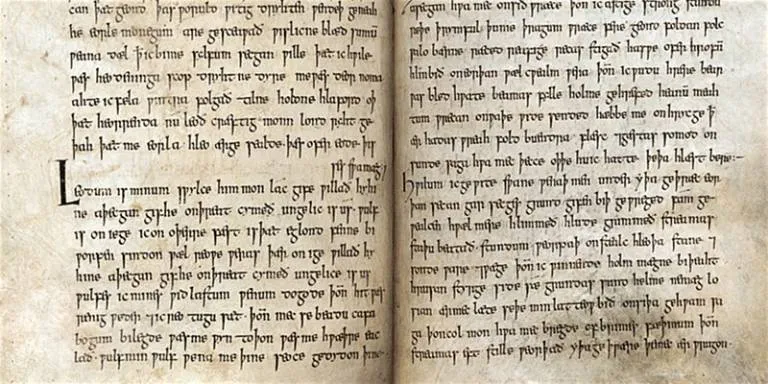
Medieval Poetry: 400 AD
The Medieval Period was a tumultuous time, marked by war and societal transformation, reflected vividly in the poetry of the era. This period saw the emergence of new poetic forms, such as rhyming couplets and ballads with refrains, which added depth and texture to the poetic landscape.
One of the most renowned poems from this era is “Beowulf,” dating back to the 12th century. This epic tale recounts the heroic exploits of Beowulf as he confronts monstrous foes to protect his people.
Written in a style reminiscent of ancient sagas, “Beowulf” utilizes alliteration and other literary devices to create a vivid and immersive narrative.
The Medieval Period also witnessed the rise of troubadours, wandering poets who celebrated the beauty and divine power of God through their songs.
These troubadours traveled from place to place, seeking patronage from noblemen who could support their artistic endeavors.
Poetry held a significant place in education during this time, with many nobles expected to compose poetry themselves. Themes in medieval poetry ranged from nature and love to more abstract concepts, such as the mysteries of life, death, and war.
Additionally, poetry served as a form of silent communication. In times of conflict or hiding, individuals would leave poems on walls or trees to convey messages. Artists like Chaucer and Mantegna also incorporated poetry into their works, using it as a means to honor their subjects.
By around 1100 AD, however, the societal view of poetry began to shift. Expressing one’s emotions openly, particularly for those who were not wealthy or of high birth, became less acceptable due to fears of mental health issues like melancholy and depression.
While poetry continued to be written, its influence remained relatively stable, without significant growth or innovation.
The Renaissance: 1500 AD
During the Renaissance, poets found inspiration in the rediscovery of classical texts from ancient Greece and Rome.
This revival of classical literature fueled a renewed passion for writing, with poets exploring themes of love, nature, and religion. Unlike the Middle Ages, there was a shift towards writing poetry for public performance, marking a significant evolution in poetic expression.
Often referred to as the “Golden Age” of literature, the Renaissance period witnessed a transition from medieval to classical styles, particularly evident in poetry. This shift, beginning around 1500 AD, signaled the end of the Middle Ages and the dawn of the Early Modern Period.
Poetry of the Renaissance era embraced classical themes, such as mythology and nature, moving away from the predominantly Christian themes of medieval literature. Poets also experimented with new forms, including the sonnet, popularized by Italian poets like Petrarch, who became known as “sonnet writers.”
This period also saw the development of new poetic meters, notably blank verse, which remains a prominent form in contemporary poetry. These innovations have had a lasting impact, influencing poets across various periods, from Romanticism to Post-modernism.
William Shakespeare, arguably the most famous poet of the era, contributed significantly to the development of sonnets and blank verse.
His works exemplify the emphasis on performance poetry, with many of his poems intended for recitation and musical accompaniment at social gatherings.
The Renaissance era also saw a flourishing of music, with composers like Henry Purcell creating influential works that continue to be celebrated today.
Poets and musicians collaborated to create emotionally resonant pieces, such as Purcell’s “Dido and Aeneas,” which served as inspiration for later artistic movements.
Notable poets of the Renaissance period include John Milton, known for his epic poem “Paradise Lost,” John Donne, famous for his metaphysical poetry, and George Herbert, whose religious poems are still revered for their depth and beauty.
Neo-Classical Poetry: 1660-1800
The 17th century witnessed a revival of classicism, with a renewed interest in the ancient civilizations of Greece and Rome.
Poets like John Dryden and Ben Jonson drew inspiration from this resurgence of classical themes in their works, marking a shift towards more traditional forms of poetry.
Poets during this period sought to imbue their work with integrity, often turning to classical forms such as epics, odes, and sonnets.
This return to traditional forms also brought about a shift in content, with poetry becoming more serious and prose exploring new topics such as politics, philosophy, and medicine.
In 1660, John Dryden’s “Annus Mirabilis” was published, a poem that reflected the English Restoration and signaled a departure from Puritanical themes towards more secular subjects in English literature.
The following years saw significant developments in French literature, notably Jean Racine’s tragedy “Phèdre,” which redefined the genre of tragedy in France and across Europe.
As the 17th century progressed, French literature continued to evolve, reflecting the social unrest of the time. Novels like “Madame Bovary” and “Les Misérables” explored complex themes and ideologies, offering profound insights into society.
Meanwhile, in England, Charles Dickens serialized his novel “Oliver Twist” starting in 1837, captivating readers with his vivid characters and social commentary. Dickens continued to produce serialized novels until his death in 1870, leaving a lasting impact on English literature.
In 1867, Ivan Turgenev published “Fathers and Sons,” a novel that provided a critical commentary on Russia’s societal changes and ideological conflicts during a turbulent era.
The 19th century also witnessed the increasing popularity of poetry among English-speaking audiences worldwide. Movements like Romanticism encouraged poets to explore their emotions, leading to a rich and diverse array of poetic expression.
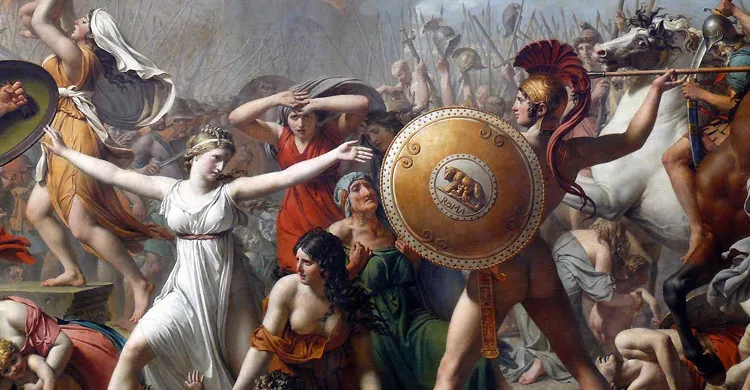
The Romantic Movement: 1798- 1850 AD
The Romantic poetry movement, spanning from the late 18th century to 1850, heralded a profound shift in literary expression. Characterized by its emphasis on subjectivity, emotion, spontaneity, and the natural world, Romantic poetry captured the essence of human experience in ways that were both captivating and relatable.
Unlike their predecessors, Romantic poets sought to connect with readers on a more personal level, delving into the complexities of everyday life rather than lofty or inaccessible themes. This accessibility endeared them to a broader audience, making their works resonate deeply with readers of all walks of life.
William Wordsworth, one of the most renowned poets of this era, epitomized the Romantic ideal with his evocative verses celebrating the beauty and majesty of the natural world.
His collaboration with Samuel Taylor Coleridge resulted in the groundbreaking work “Lyrical Ballads,” which emphasized sensory description and narrative over formal rules, ushering in a new era of poetic expression.
Central to the Romantic ethos was the belief that art should be a reflection of the artist’s emotional experience and imaginative response, rather than a mere conveyance of factual information.
This profound shift in perspective continues to influence literature today, with many modern novels embracing a first-person point of view to convey the intimate thoughts and emotions of their characters.
The Victorian era, which followed the Romantic period, further propelled the evolution of poetry by granting poets greater personal freedom in expression.
This newfound liberty gave rise to a wave of introspective works exploring themes such as childhood innocence and the beauty of nature, ushering in a new era of poetic exploration and innovation.
The Modernist Movement in poetry: 1950- 1900s
It’s remarkable to think that modern poetry, which feels so ingrained in our literary landscape, has only been around for about a century. Its roots are relatively shallow, starting with the pioneering work of Walt Whitman.
Whitman’s poems, particularly “Song of Myself,” were revolutionary for their time, delving deep into human nature and expressing ideas of democratic self-love and acceptance for all. He embraced free verse, a form without meter or rhyme, which gave his work a prose-like quality while maintaining its poetic essence.
In addition to his innovative approach to form, Whitman also used his poetry as a platform to speak out against social injustices like slavery, setting a precedent for modern poets to engage with pressing social issues.
The Modernist Movement officially began in the mid-1800s, marked by a departure from traditional poetic forms and themes. Poets like T.S. Eliot and Ezra Pound emerged as prominent figures, challenging the conventions of their predecessors.
Unlike the Romantics who preceded them, Modernist poets were less concerned with nature and personal emotions and more focused on exploring complex human psychology and societal issues.
This shift in focus was reflected in their writing styles, with many opting for free verse over formal rhyme schemes and metered rhythm.
Modernist poets also experimented with other forms of media to present their work, blurring the lines between visual art and poetry. Allen Ginsberg, for example, published his iconic poem “Howl” with illustrations by William Blake, while Robert Frost’s “A Boy’s Will” was illustrated by Rockwell Kent, showcasing the evolving relationship between visual art and poetry.
Overall, the Modernist Movement in poetry marked a significant departure from tradition, paving the way for a new era of poetic expression that continues to shape the literary landscape today.
Poetry in America during the 20th century
Poetry in America during the 20th century underwent an interesting evolution, reflecting the cultural, social, and political upheavals of the time.
The early 1900s witnessed the rise of Modernist poetry, a movement that challenged traditional poetic forms and embraced experimentation with language and structure. Poets like Wallace Stevens pushed the boundaries of poetic expression, crafting verses that were abstract yet deeply rooted in the American experience.
As the century progressed, poetry began to reach a wider audience, thanks in part to a new generation of poets inspired by movements such as the Civil Rights Movement and the counterculture.
These poets, known as the Beat Poets, rejected established literary norms and embraced alternative lifestyles and forms of expression. Figures like Allen Ginsberg and Jack Kerouac captivated audiences with their raw, improvisational style and unorthodox use of language.
Simultaneously, African American poets like Langston Hughes and Gwendolyn Brooks used poetry to articulate the struggles and triumphs of the African American experience, contributing to a rich tapestry of voices in American literature.
The mid-20th century also saw the emergence of Confessional poetry, a genre characterized by its intimate exploration of personal experiences and emotions. Poets like Sylvia Plath and Robert Lowell used poetry as a means of introspection, tackling subjects such as mental illness and sexuality with unflinching honesty.
In the latter part of the century, poets sought to break down the barriers between poetry and other art forms, incorporating elements of performance art, visual art, and music into their work.
Poets like Amiri Baraka and John Giorno used poetry as a form of cultural and political resistance, harnessing the power of the spoken word to engage and challenge audiences.
Overall, 20th-century American poetry was a testament to the power of words to reflect and shape the world around us, offering a diverse and vibrant tapestry of voices that continues to inspire and provoke thought today.
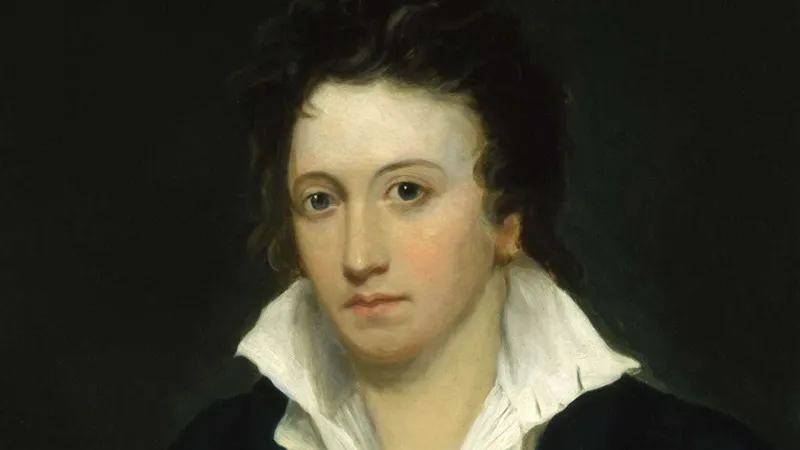
The Black Arts Movement and its impact on African American poetry
The Black Arts Movement, emerging in the mid-1960s, was a powerful cultural and political force that aimed to uplift African American pride and identity through artistic expression.
This movement had a profound impact on African American poetry, providing a platform for black writers to reclaim their cultural heritage and assert their dignity in a society that often marginalized them.
Inspired by the Civil Rights Movement, the Black Arts Movement challenged established literary and cultural norms that had historically excluded black writers. It celebrated blackness and embraced the African American experience, using language that was bold, direct, and unapologetically African American.
Amiri Baraka was a central figure in this movement, known for his provocative poetry that tackled themes of race and politics. His work helped define the movement and paved the way for a new generation of black poets to assert their cultural heritage.
Gwendolyn Brooks, the first African American to win a Pulitzer Prize for poetry, was another influential figure. Her powerful poetry addressed race, poverty, and the African American experience, setting a standard for African American poets to follow.
The Black Arts Movement also influenced the development of the spoken word, with poets and artists using performance as a means to reach a wider audience.
The Nuyorican Poets Café, founded in the 1970s, became a vital hub for black writers and artists in New York City, fostering community and support.
Overall, the Black Arts Movement was a transformative period for African American poetry, inspiring a new generation of poets to express their unique perspectives and use their art as a tool for political and cultural resistance.
Hip Hop and its evolution as a form of poetry
Hip hop, born from the vibrant streets of the Bronx, New York in the late 1970s and early 1980s, has evolved into a global cultural phenomenon, celebrated for its rhythmic storytelling and poetic expression.
Originating from block parties where DJs spun beats and MCs delivered spontaneous verses, hip hop quickly became a platform for artists to share their stories, experiences, and social commentary. This improvisational style, known as freestyling, laid the groundwork for the genre’s lyrical focus.
As hip hop progressed, MCs began to take center stage, crafting their unique styles and pushing the boundaries of rhythm and rhyme. The genre’s evolution was influenced by the political and social climate, providing a voice for marginalized communities to express their struggles and triumphs.
Pioneers like Grandmaster Flash and KRS-One played pivotal roles in shaping hip hop’s early years. Grandmaster Flash’s innovative mixing techniques and KRS-One’s powerful lyrics on social justice and the African American experience helped define hip hop as a genre of storytelling and resistance.
In the late 1980s and early 1990s, hip hop’s reach expanded globally, with artists like Tupac, Notorious B.I.G., and Eminem gaining worldwide acclaim. This era saw hip hop diversify in style and subject matter, from political activism to personal introspection.
Today, hip hop continues to evolve, with new artists pushing its boundaries and using it as a platform for social change. Its influence on popular culture and its ability to captivate audiences with its raw, authentic storytelling make it one of the most celebrated forms of poetry in the world.
The role of technology and the internet in contemporary poetry
The digital age has transformed contemporary poetry, offering poets new avenues for creativity and connection. Technology and the internet have made poetry more accessible than ever before, allowing poets to share their work globally and engage with diverse audiences instantly.
One significant impact of technology is the ability for poets to experiment with multimedia forms. Poets can now integrate images, sounds, and video into their work, creating immersive experiences that push the boundaries of traditional poetry.
This newfound freedom has sparked a wave of innovative and boundary-pushing poetry that captivates and engages readers in new ways.
Moreover, social media platforms have become vital spaces for poets to connect and share their work. Platforms like Twitter, Instagram, and TikTok have enabled poets to build communities, share their poetry with a wider audience, and engage in meaningful conversations about poetry’s role in society. These platforms have democratized poetry, allowing poets to reach audiences that were previously inaccessible.
However, the digital age has also brought challenges for poets, particularly in terms of the commodification of poetry. With the rise of social media, poets often find themselves competing in a crowded market for recognition and financial gain.
This commodification has raised concerns about the sustainability of poetry as a profession and the impact it has on the quality and integrity of poetry.
Despite these challenges, the digital age has undeniably revolutionized contemporary poetry, opening up new possibilities for creativity, connection, and community.
As technology continues to evolve, so too will poetry, shaping the way we create, share, and experience this timeless art form.
2024: The State Of Poetry And AI
Poetry and AI may seem like an unlikely pairing, but the intersection of these two worlds has led to some fascinating developments.
Artificial intelligence, or AI, has been used to create poetry in various forms, from generating new poems to analyzing existing works. This marriage of technology and art has sparked debates about creativity, authorship, and the future of literature.
One of the most intriguing applications of AI in poetry is the use of neural networks to generate new poems. These systems are trained on vast amounts of existing poetry, learning the patterns and structures that define different styles and genres. Using this knowledge, they can then generate new poems that mimic the style of a particular poet or era.
For example, ChatGPT has been used to create poems in the style of famous poets like Shakespeare, Emily Dickinson, and Pablo Neruda.
While these AI-generated poems may not always capture the depth and complexity of human emotion, they can be surprisingly convincing in terms of style and form.
AI has also been used to analyze existing poems, offering insights into their structure, themes, and linguistic features. By applying algorithms to large collections of poetry, researchers can uncover patterns and trends that may not be apparent to human readers.
This can lead to new understandings of poetic techniques and styles, as well as insights into the cultural and historical contexts in which poems were written.
Despite these advancements, AI-generated poetry raises questions about the nature of creativity and authorship. Can a machine truly be creative, or is it simply mimicking human creativity? Who owns the rights to AI-generated poetry, the creator of the AI system or the original poets whose works were used to train it?
While these questions may not have easy answers, one thing is clear: AI has the potential to revolutionize the world of poetry, opening up new possibilities for creativity, analysis, and understanding.
As technology continues to advance, we can expect to see even more exciting developments in this field, blurring the lines between man and machine, creator and creation.
Poetry's role in activism and social movements
Poetry has played a significant role in activism and social movements throughout history. It has been used as a tool for protest, resistance, and expression of political, social, and cultural dissent.
The power of poetry lies in its ability to evoke emotion, inspire action, and bring about change through the imaginative use of language.
One of the earliest examples of poetry’s role in activism can be seen in the works of African American poets during the Civil Rights Movement.
Poets such as Maya Angelou, Langston Hughes, and Gwendolyn Brooks used their verse to address issues of racial inequality and oppression.
Their works helped to give voice to the struggles and experiences of black Americans, and served as a rallying cry for social justice.
In more recent times, poetry has continued to play a vital role in activism and social movements. During the Arab Spring, for instance, poets in the Middle East used their works to protest against oppressive regimes, advocate for democracy, and call for human rights.
Similarly, poets in India have used their verse to address issues of caste discrimination and inequality, and to call for social justice and change.
In addition to its use in traditional forms of activism, poetry has also been utilized in more contemporary forms of resistance, such as the #MeToo movement.
Poets such as Rupi Kaur and Cleo Wade have used their works to speak out against sexual harassment and assault, and to give voice to the experiences of survivors.
Their poetry has been widely shared on social media, and has helped to raise awareness and generate discussion on these important issues.
The power of poetry lies in its ability to reach beyond borders and cultures, and to resonate with people from all walks of life. It has the ability to stir the hearts and minds of those who read or hear it, and to inspire them to take action for change. In this way, poetry has the potential to be a powerful tool for activism, and to play a critical role in shaping public opinion and driving social movements.
Furthermore, poetry has the ability to bring people together in a shared experience. In a world that is often divided by race, gender, religion, and politics, poetry has the power to unite people around a common cause, and to create a sense of community and solidarity.
Whether it is through spoken word performances, poetry slams, or simply reading and sharing poems on social media, poetry has the power to bring people together and create a sense of shared purpose and meaning.
Conclusion
In closing, poetry stands as a testament to our shared human experience, weaving a rich tapestry of stories, emotions, and critiques that transcend time and culture.
From the epic narratives of Homer to the poignant lyrics of today’s hip-hop artists, poetry has been a constant companion, shaping our perceptions of the world and ourselves.
Whether serving as a vessel for storytelling, a medium for expressing raw emotion, or a tool for challenging societal norms, poetry remains a dynamic and impactful art form that evolves with each passing generation.
Its ancient origins and modern adaptations reflect a timeless tradition that speaks to the heart of our cultural identity, ensuring its relevance and resonance for generations to come.
Related Posts:
- The Unconditional Benefits Of Poetry
- Biblical Poetry: A masterclass in the power of simplicity
- Expand Your Poetry Repertoire With These 21+ Different Forms
- Poetry Therapy; The Secret To Healing Your Creativity
- The Ultimate Poetry Inspiration: 51+ Prompts to…
- Inspiration Awaits: 51+ Poetry Writing Prompts

